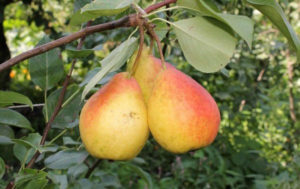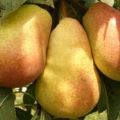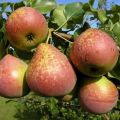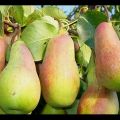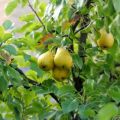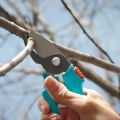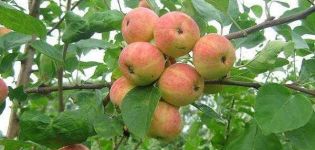Description and characteristics of the pear variety Chudesnitsa, planting and care
The Chuddesnitsa pear variety was included in the State Register of Breeding Achievements in 2004. Despite the youth of the hybrid, the culture of the winter ripening period was recognized by the gardeners of the Central Black Earth Region for the combination of winter hardiness and high yield.
Description and characteristics of the Chudesnitsa variety
The common pear of the Wonderful variety is good in that you can enjoy yourself with your own grown, environmentally friendly fruits all winter.
Fruit
Lumpy green fruits with a blush on the sides, when ripe, acquire a yellow-green color, similar in shape to an elongated truncated cone. Smooth rind - medium dense, covered with a waxy bloom. The weight of one fruit ranges from 130-220 g.
The milk pulp of a pear with a creamy shade has a delicate texture without stony inclusions and a pronounced aroma. The juiciness of the fruit is due to the 85% water content. The balance of organic acids (10%) and sugars (0.3%), which determine the taste, the absence of viscosity and astringency, were evaluated by professional tasters at 4.3 points out of 5 possible.
Fruit seeds are small, brown. The curved peduncle is firmly attached to the base.
Wood
The trunk, shoots of a 3-meter tree are smooth brown. The branches form a spreading pyramidal crown. Buds are small, conical, tightly pressed to the shoots. Green shiny ovoid leaves are serrated along the edges, pointed and curved at the ends.
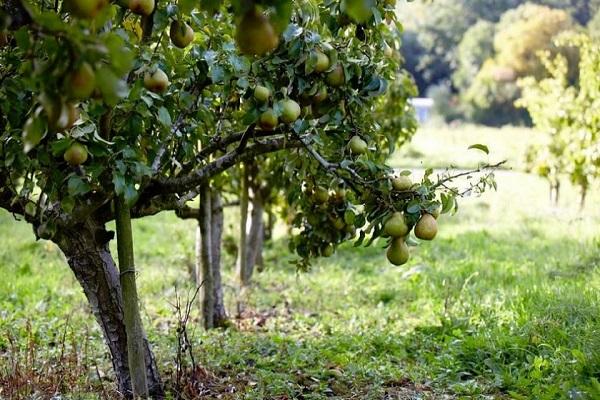
The Miracle pear blooms with white 5-petal flowers, collected in inflorescences. Lush, fragrant bloom begins in late May and lasts for a week.
Using
In cooking, pears are used to make jam, marmalade, compote. Juice is squeezed out of the fruit, fruit seeds are included in the recipe for caffeinated drinks. To add a piquant taste, pieces of Chudesnitsa pears are added to salads, sauces, baked goods.
Traditional medicine uses the following properties of the fruit:
- diuretic;
- anti-inflammatory;
- antipyretic;
- fixing;
- anti-sclerotic.
Pears reduce the cough reflex, contain a high potassium content (160 mg per 100 g of product), which has a beneficial effect on the work of the heart, blood vessels, kidneys.

Yield
Full fruiting of the culture begins from the sixth year of the life of the fruit tree. The peak yield falls on 13-15 years after planting, when up to 80 kg of fruits are harvested from one Miracle pear. At the age of 6–12 years, the average yield is 50 kg per tree or 130 centners per hectare.
Pollinators
Low self-fertility of the Miracle pear assumes planting in the neighborhood of simultaneously flowering varieties of Nick, Extravaganza, significantly increasing the number of ovaries.
Transportability
The high transportability of the variety is used by large horticultural enterprises and gardeners who grow fruits in individual plots, when transporting fruits over long distances to places of sale.

The main positive and negative sides of the pear
The pear variety Chuddesnitsa was appreciated by summer residents and farmers for its positive characteristics:
- frost resistance up to -38 ° С;
- decorative crown;
- dessert taste of fruits with a flower-pear aroma;
- compactness, low size of the tree, facilitating care, harvesting;
- keeping quality, high transportability;
- long fresh storage;
- universality of application;
- high resistance to rust, scab, pests;
- stable fruiting;
- high, artificially created immunity.
Of the disadvantages of a pear, the need for regular pruning is noted, since with a thickened crown, the plant does not have the strength to form full-fledged fruits. The second disadvantage is the need to plant a number of pollinators.

The specifics of growing crops
Until the moment of planting the Miracle pear, gardeners are determined with the time and place, they choose a suitable seedling. When planting crops follow the recommended algorithm.
Choice of time and place
In the climatic zone of Central Russia, it is preferable to plant the Miracle in April before the buds open. During the season, the culture has time to take root, gain strength for wintering.
In the southern regions, a tree planted in September normally takes root and develops.
When choosing a landing site, exclude lowlands, shady corners of the garden. Pear is originally a thermophilic plant that requires good sunlight. Therefore, other tall fruit trees are planted no closer than 5 meters from the pear.
The combination of winter frosts and close occurrence of groundwater is detrimental to culture.
Since the pear does not tolerate transplants, it is important to prepare suitable soil on the site. The tree loves loose, fertile soil that retains moisture at the roots.
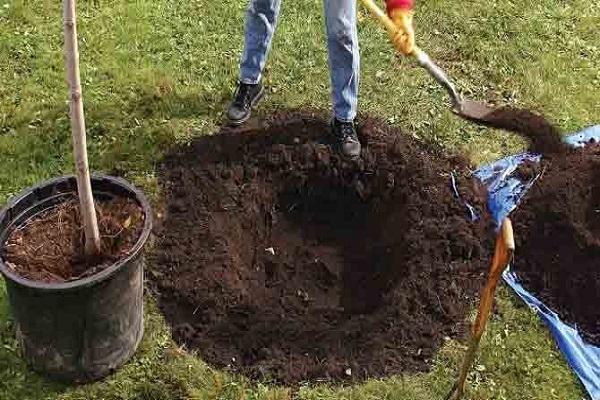
Preparation of planting material
Starting from three years old, seedlings take root poorly. For normal rooting of the Miracle pear, a 1–2 year old tree with elastic shoots without dried out areas, deformations, mechanical damage is chosen.
A seedling with open roots is soaked before planting, the roots are shortened to 20 cm. Experienced gardeners recommend diluting a Heteroauxin growth stimulator tablet or 1 tbsp in a bucket of water. l. honey.

How to plant a seedling correctly
From autumn to the first frost, a planting hole is prepared 80 cm wide and deep. A drainage layer is made at the bottom, watered so that the earth settles. In the spring, the top arable layer is combined with three buckets of humus. In addition to organics, mineral fertilizers are added - 200 g of superphosphate, 50 g of potassium sulfate and 2 buckets of sand, which increases the looseness of the soil.
They choose a cloudy day and start planting the Miracle pear, observing the technology:
- a low mound is built from the prepared substrate at the bottom;
- stick in a count support;
- the seedling is lowered in the center of the elevation, straightening each root;
- fall asleep with a substrate, slightly tamp the surface;
- water the seedling with a bucket of water;
- mulch the trunk circle with sawdust, hay;
- tie a tree to a support.
The top of the pear is darker than the roots. At the border of the color change, there is a root collar, which after planting should rise 2-4 cm above the ground.
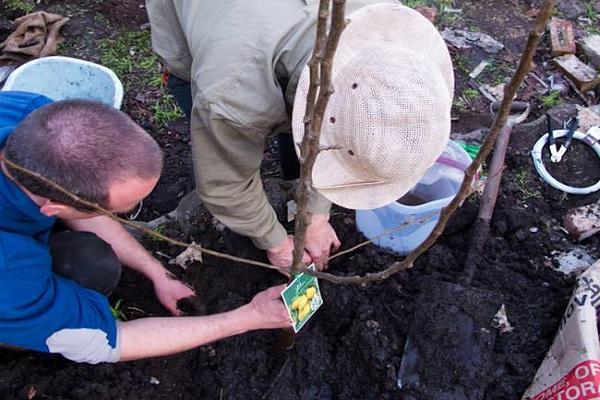
Further wood care
Further care for the Miracle pear includes moderate watering, mandatory pruning, and preparation for cold weather.They preserve the health of the crop, the crop, the introduction of fertilizers into the soil, preventive treatments against diseases, pests.
Watering and feeding
Watering the Miracle in the grooves. The first is dug around a trunk 10-15 cm deep with a crown diameter. The second furrow is made closer to the trunk, stepping back from the first half a meter.
In a winter with little snow, an adult tree is watered at the end of March. If there was enough snow, irrigation is carried out after the culture has faded. A fruiting pear needs at least 30 liters of water per 1 sq. m.
A seedling of the first year of life is watered every week in a volume of 10 liters.
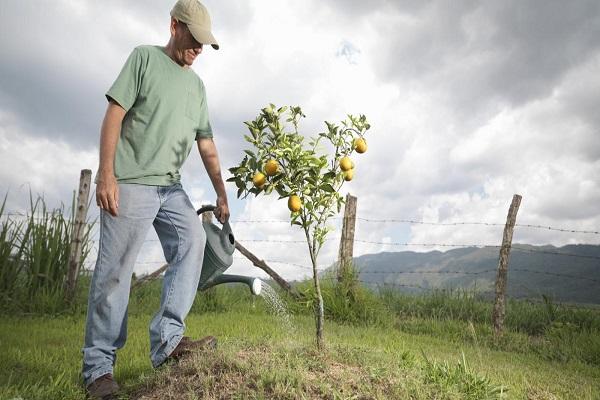
When forming, pouring fruit, the plant is irrigated abundantly. This period falls in mid-June.
The next crop moisture is in August, one month before harvest.
Immediately after the leaves fall, water-charging irrigation is done, which prevents the freezing of the root system in winter.
The pear is fed until the ovary is formed three times. The first time - during the awakening of the kidneys with urea or carbamide (100 g per tree). In the flowering phase, the culture is fertilized with a solution of chicken manure or mullein (30 l). When the flower petals fall off, they bring nitroammophoska under the tree (50 g per bucket of water).
In summer, the plant is sprayed with a solution of magnesium sulfate over the leaves. In July, superphosphate is introduced under the tree, which increases the sugar content and keeping quality of the fruits.
In the fall, to increase frost resistance, the miracle is fertilized with preparations containing potassium, phosphorus or ash.
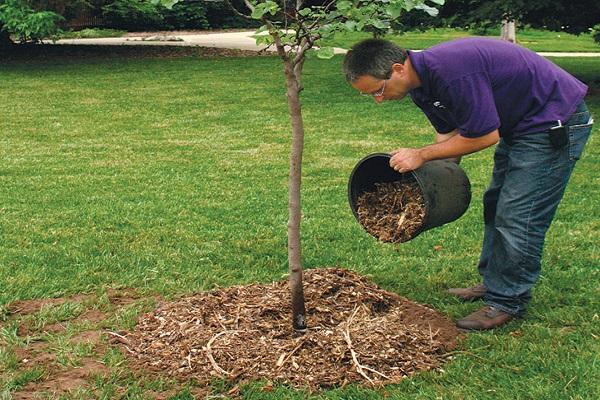
Pruning
Formative pruning by the longline method begins from the third year of the Miracle pear's life. The procedure is carried out every spring before the beginning of the growing season, until the plant reaches 7 years old. They start with the formation of the first tier of culture. For this, 2–3 skeletal multidirectional branches are left on the trunk, located at the same distance from the ground.
The next year, the branches of the second order are cut off by one third, young shoots are removed and branches are left 50-60 cm above the first tier to form the second tier. According to the same scheme, pear pruning is continued in subsequent years.
At the end of the formation of the skeleton of the tree, sanitary pruning is carried out annually, removing the sick who have not survived the winter, and not fruiting shoots (tops) thickening the crown.
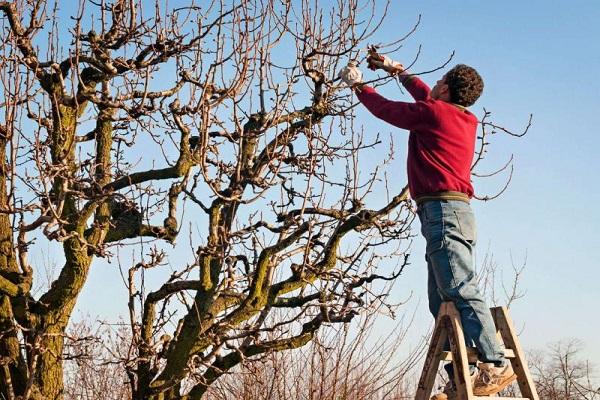
Whitewash
In autumn and early spring, when the snow has not melted in places, the stem and lower branches of the pear are whitewashed. This simple exercise protects the bark of the fruit tree from rodents in winter and prevents sunburn in the spring.
A bucket of water will require 2 kg of lime and 200 g of copper sulfate. It is more convenient to purchase ready-made paint with special additives that protect the culture, ensuring the durability of the whitewash.
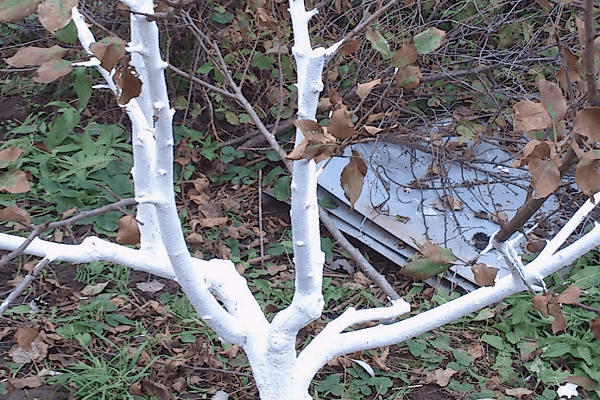
Preparing for winter
Preparatory work for a painless entry into the winter of the Pear Miracle is standard:
- the trunk circle is cleaned of plant residues;
- remove rotten fruit from the tree;
- irrigate abundantly (5–7 buckets);
- mulch the soil around the trunk.
Mature trees have enough mulch, spruce branches, brushwood, placed under a pear. Saplings need to be insulated not only for the root system, but also for the trunk. It is wrapped with agrofibre, another covering material.

Diseases and pests of pear
Pear Miracle is resistant to fungal diseases, but to be on the safe side, it is recommended to spray the crop before the beginning of the growing season, during the budding period and after flowering. Use drugs that have proven their effectiveness in the amount specified in the instructions for use. These funds include:
- copper or iron sulfate;
- Bordeaux liquid;
- Hom;
- Topaz;
- Speed
Biological preparations Trichodermin, Fitoverm, Gaupsin are less toxic.
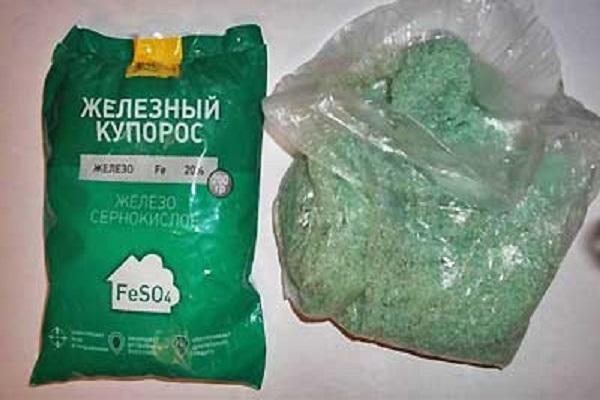
Of the insects, the Miracle is most annoyed by the pear honeydew, which is divided into 3 subspecies - red, yellow and spotted.
Insect larvae feed on the sap of the tops of shoots, buds, leaf plates, inhibiting the growth of culture.If you do not take urgent measures, the affected leaves will fly around, the pulp of the pear will stiffen.
In March - early April, a sheet is spread under the tree and adult coppers are shaken off the branches. If pests fall in large quantities, treatment with Aktara is required, which is repeated before and after flowering.
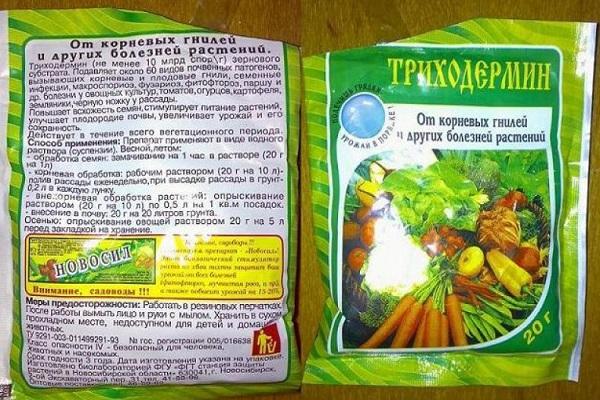
Harvesting and storage
Miracle fruits ripen by mid-September. For harvesting, you will need a stepladder, a metal hook for tilting branches and a basket. The fruit is picked with the stalk in dry, sunny weather.
Pears are stored in basements, cellars for up to 5 months at a temperature of 0-5 ° C, placed in a wooden box with holes. The fruits are spread with paper and laid with the stalks up. If there is little fruit, keep in the refrigerator.
Dried or frozen fruits are suitable for consumption throughout the year.
Pear Chuddesnitsa is a successful result of the work of domestic breeders who have achieved the combination of the best characteristics in one variety, the possibility of growing a crop in Central Russia.
